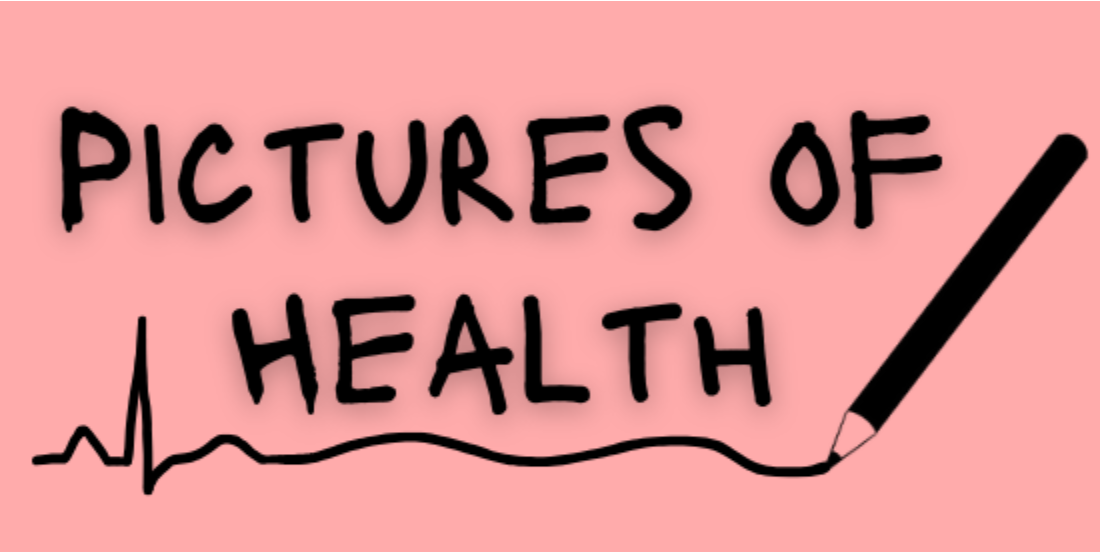by Grace Johnson
Vaccinations have been one of the greatest and most impactful medical developments in human history, but many people do not truly understand how they work. This lack of comprehension can understandably lead to wariness and even refusal of immunizations for people and their children. That is why the “Vaccination Power” poster was created, to help de-mysticize vaccines and help more people to recognize their importance. And just like all the Pictures of Health posters, it was based entirely on proven science.
The Science Behind “Vaccination Power”
The purpose of vaccination is to induce the body’s natural immune response to a specific pathogen in a safe, controlled manner before actually coming into contact with the pathogen. A pathogen is an infectious organism that causes illness in a host system and is most commonly a bacteria or virus. Of the two immune systems in the human body – the innate and the adaptive – the adaptive immune system is the one responsible for responding to specific pathogens and generating long-term immunity.[1] Since the body normally takes multiple days to build an active immune response to a new pathogen, vaccines can prepare this response prior to exposure and speed up the process of clearing the illness whenever exposure does occur. The way that vaccinations achieve this is by mimicking the specific pathogen being targeted, and this imitation-infection can be accomplished in multiple ways.
Vaccines introduce a safe form of a pathogen’s antigen – the component of a pathogen that is targeted by the body’s immune system. There are various ways that antigens can be incorporated into a vaccine. One way is by including the pathogen itself, either as dead pathogen or in a weakened/inactivated form (referred to as live-attenuated) that does not pose significant risk of full-on infection.[2] Other vaccines use only a specific, recognizable feature of the antigen to invoke an immune response. These different methods result in different extents of immunity, which is why some vaccines require booster doses while others do not. Still, they all achieve the same end result of establishing immune cells that will remember and more efficiently fight off future infection.
Antigens are not the only component found in a vial of vaccine, and without understanding the purpose and function of other vaccine elements they can seem alarming. However, every component in vaccines is both safe and important to the efficacy of the immunization.[3] Many of these elements are left over from the process of preparing the antigen. Formaldehyde is a common agent for inactivating pathogens and is only found at levels even more dilute than what is already naturally present in the human body, meaning it poses no risk to the vaccine recipient’s health. Residual proteins used to propagate enough pathogen for use in the vaccine may also be present, with a common one being egg protein. Once again, these pose no significant risk to most vaccine recipients. For those with egg allergies there are a variety of options or alternative vaccines available upon talking with a physician about it. The majority of the remaining vaccine contents consist of stabilizers, preservatives, and adjuvants – things like aluminum salts that help to enhance the body’s reaction to the vaccine and build a stronger immune response.[3] Again, though the list of ingredients in a vaccine can seem alarming at first glance, every component has a specific function and is carefully measured to mitigate potential harms.
While all vaccines are carefully and thoroughly crafted to be safe as well as effective, not everyone is able to receive vaccines. For example, those who are immunocompromised – such as individuals with HIV/AIDS or those on immunosuppressors for various medical conditions – are not recommended to receive live-attenuated vaccines.[2] While normally the human body can easily prevent true infection from a live-attenuated vaccine (resulting in the desired immune memory response), those with suppressed immune systems may not be capable and run the risk of contracting the illness despite the pathogen being extremely weakened. Other individuals may not be able to be vaccinated due to religious restrictions or allergies to certain vaccine components. Because of cases like these, it is crucial for everyone who is able to be vaccinated so that we can achieve herd immunity. Herd immunity is the state in which a high enough percentage of the population is immune and the pathogen can no longer effectively spread, protecting the small portion of individuals unable to be immunized.[4] This is why vaccination is so important. It not only helps to protect yourself, but also helps to protect others.
Though vaccination is not an absolute guarantee against contracting an illness, it has proven time and time again throughout history to be a highly effective tool in protecting against illness, decreasing the severity of illness, and preventing the spread of infection.
Protect yourself, protect others, get vaccinated.
[1] Clem, A. S. (2011). Fundamentals of Vaccine Immunology. Journal of global infectious diseases. https://www.ncbi.nlm.nih.gov/pmc/articles/PMC3068582/
[2] CDC. (2023, May 24). Explaining how vaccines work. Centers for Disease Control and Prevention. https://www.cdc.gov/vaccines/hcp/conversations/understanding-vacc-work.html
[3] CDC. (2022, July 14). What’s in vaccines? ingredients and vaccine safety. Centers for Disease Control and Prevention. https://www.cdc.gov/vaccines/vac-gen/additives.htm
[4] WHO. (2020, December 8). How do vaccines work?. World Health Organization. https://www.who.int/news-room/feature-stories/detail/how-do-vaccines-work
